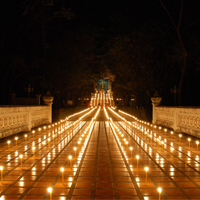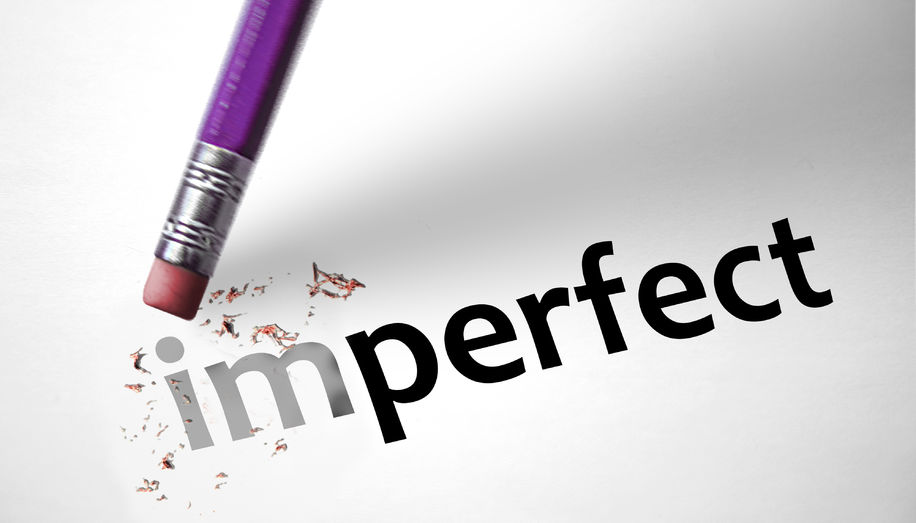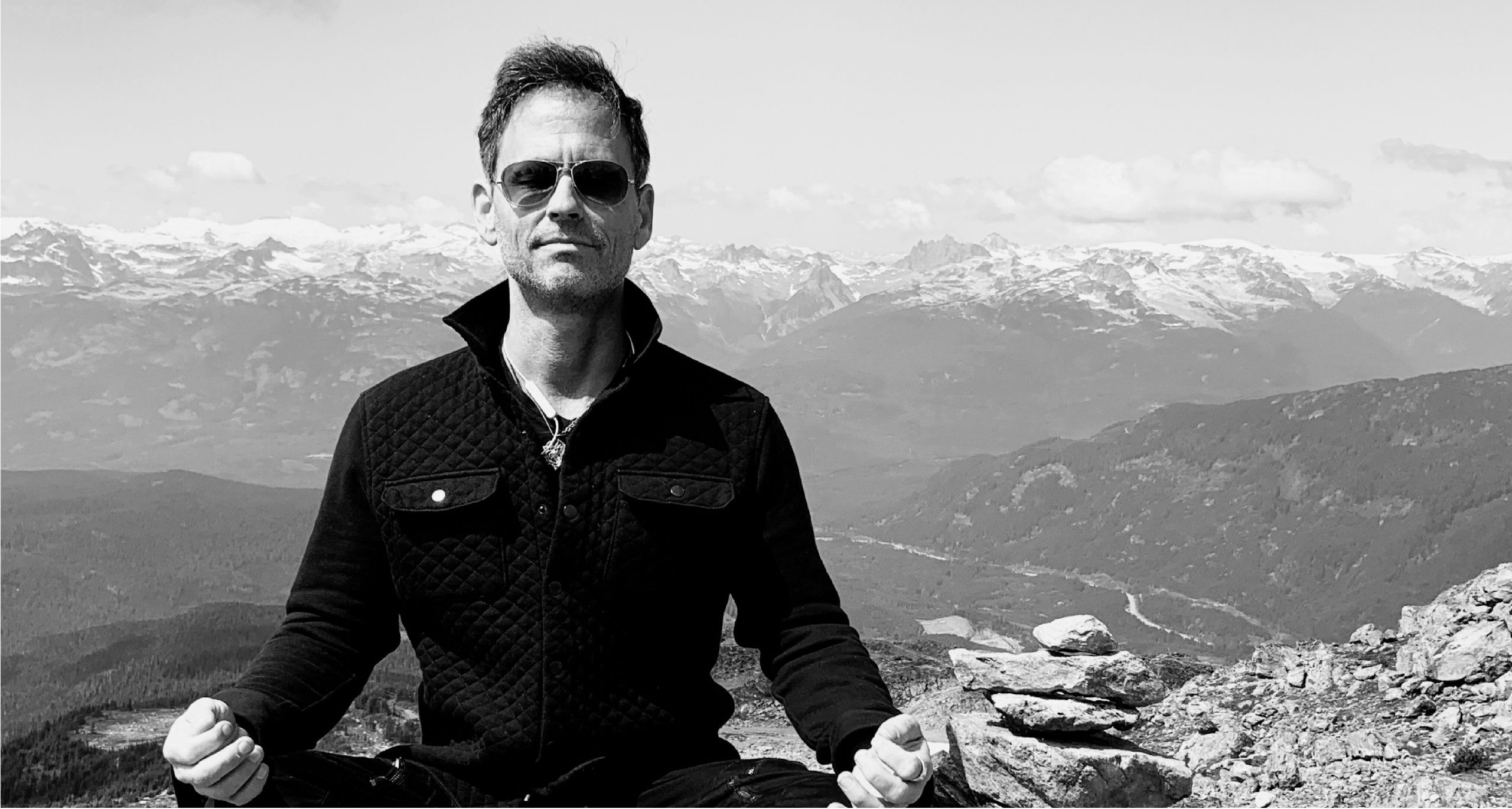
by sublimity-001-main | Jan 14, 2013 | 2013, Emergence, Post
“To he who is right in mind, he can do all the wrong things and it will still turn out right. To she who is wrong in mind, she can do all the right things and it will still turn out wrong.”
As we watch the Wall Street rich get richer (many of whom created our economic crisis) while honest, hard-working people get poorer, a question naturally arises:
“Why do good things happen to bad people — and so many bad things happen to good people?”
It sometimes feels like we’re living in a perpetual opposite day, where “Love yourself not your neighbor” seems to be the golden rule and “Take and you shall receive” appears to be the principle of abundance. In the self-help/spiritual arena, the pain is felt even more acutely; where’s karma, the law of cause and effect, the law of attraction? if you’re a good human being, good stuff is supposed to happen to you, right?
Wrong.
It’s a common misunderstanding to believe that “human goodness” leads to the experience of human good. In fact, that’s not always — or even often — the case.
Here is the real principle of life: Consciousness is cause.
It’s not so much the actions we take, but the consciousness behind them, that determines our experience. If a greedy person believes they’re worthy or capable of creating wealth, they’ll create it. If a generous and kind person doesn’t feel worthy or abundant, they’ll end up a broke do-gooder.
It’s not personal, it’s principle.
For every area of our life, we have certain set-points. For example, we might feel capable and confident with our work — and hold a strong self-image about it — but simultaneously harbor a limited identity and belief system around wealth. This can create an experience where we do great work, receive abundant kudos and are still underpaid. Or if we manage to increase our paycheck, our expenses increase with it — making us broke at a higher income bracket!
This can also show up in the area of health. A person can do all the right things, eat all the right foods and still end up getting sick — while another person eats whatever they want and hardly has a down day in their life. Don’t you just hate those people?!
Some would argue that this is about genetics. But the latest discoveries in epigenetics reveal that genes don’t control our body, the environment of the cell does. And what controls the environment of our cells?
Our consciousness.
This has been further shown in the science of psychoneuroimmunology, which explains how our thoughts become chemical and electrical impulses in our body, forming a biological alphabet that sends commands to our cells. Thoughts become things. Our biography becomes our biology.
Our consciousness is the cause of our reality.
If we take a deeper look at the do-gooder, striving to change the world for the better — but getting short-changed themselves — we’ll find a belief system of limitation and fear. The inner talk might sound something like “life is hard, people are unfairly treated, things are unjust… ” And that is the kind of life they experience, regardless of how much they “fight the good fight.”
We don’t get what we want — or even what we pray for — we get what we are in consciousness. Life is not fair, it’s lawful. When a person eats a healthy meal, but underneath it is motivated by fear or self-loathing, the law of consciousness sees a fearful, self-loathing person and magnifies that, drawing more of that to them.
The universe is blind to your actions but acutely aware of the thoughts behind them.
This isn’t to say that actions aren’t important. Action is crucial to creation. As the saying goes, “Faith without works is dead.” But the reverse is also true: “Works without faith are dead.” By all means, act from your highest standard of good. But be sure to align yourself with an equally high state of consciousness.
If you find yourself saving money out of fear of loss, shift that perspective so you’re saving from a state of inspiration and abundance — you’re saving “for” something, like financial freedom or a new house, rather than saving “from” something, like the fear of financial ruin or losing your house.
This week, pay closer attention to the consciousness behind your actions. Notice when what you say matches what you’re thinking and feeling and when it doesn’t. Become aware of when your actions are in alignment with your deeper beliefs and when they contradict them.
Take some time to journal about the beliefs, self-talk and emotions behind the key areas of your life — particularly the ones where you’re experiencing challenges. At the end of the week, review this. You’ll discover that the picture you’re seeing outside is a reflection — if only faintly — of the mental/emotional picture you’re living inside. You’ll also start to see the gap between what you’re trying to create — the actions you’re taking — and what you’re really creating with your thoughts, feelings and mental images.
The awareness of this gap is the beginning of real change. Set the intention to close that gap. Work with this material daily. And as your thoughts, feelings, words and actions become in integrity with your highest vision, you’ll become one of the “good people” who has good things happening… and you’ll be unstoppable.
Until next time, Stay Inspired!
Derek Rydall

by sublimity-001-main | Jan 14, 2013 | 2013, Emergence, Post
“Where there is no vision, the people perish.”
— Proverbs 29:18
Within you, there is a destiny waiting to be born — a life of such purpose, creativity and contribution that its light would blind you if apprehended it in its fullness. But to actualize it, you must dive beneath the surface tension of the mind’s need to control the present. You must project into the future, tap into a vision for your life bigger than your TV screen (or at least your computer screen) and bring your thoughts, feelings, words, and actions into integrity with it.
It sounds difficult to do. But we’re all doing it on some level — although often with less-than-inspired visions. For example, people who walk around fearing economic collapse, nuclear fallout, or any number of impending disasters, are regularly running worst-case scenarios in their mind and commiserating with others about how bad things are. In other words, they’re in integrity with a vision of lack and limitation.
And what we’re in integrity with becomes our experience.
If this describes you, the good news is it’s not even your vision, it’s the collective consciousness — or collective nightmare. It’s a thought virus you caught. And there’s a vaccination against it, or antidote to it: cultivating a vision rooted in your core values that makes you come alive — then committing to it as if your life depends on it.
It’s not for the faint of heart. As Emerson said, “God will not have His work made manifest by cowards.” But the alternative is a life of quiet desperation. Your destiny won’t let you rest until you let it express. The pain pushes until the vision pulls. Until you answer the calling of your soul with a resounding “Yes,” you’ll feel like a puppet in this divine production.
But what does it mean to have a vision? We often think of a vision as something that foretells the future. But that’s prediction, based on the cause-and-effect of your dominant thought trend, and can always be changed. In some self-help teachings, a vision is something we create based on what we believe will fulfill us. But that’s imagination and is limited, since imagination, at best, is just a rearrangement of what’s already known — or worse, a reaction to a limited self-image.
True vision can’t be created or changed; it’s part of the changeless fabric of “Ultimate Reality,” the realm of perfect prototypes or “ideal forms” as Plato put it. True vision can never be imagined; it comes from a place beyond the mind, revealing something unprecedented. And true vision is never in the future; it’s a realization of what is in the timeless dimension of our being.
It may be temporarily obscured like the sun on a cloudy day. But like the sun, our vision is always shining, waiting for us to pierce the weather of our mind and let its warmth and vitalizing power into our life.
Finally, a life of true vision isn’t about adding anything to us, but about seeing our “Real Self,” releasing everything it isn’t, and allowing our life to unfold according to Its perfect pattern. Michelangelo knew this when he created the David. He saw the completed masterpiece in the block of marble then chipped away everything that wasn’t it.
That is what we are called to do as artists of our life — discover the masterpiece hiding in this block of mortal stone and set it free.
Tapping Into Your Vision
- Take a moment to become still and watch your breath. Don’t control it, just let it breathe itself. With each exhalation, release everything that has come before and all concern for the future.
- Bring to your mind and heart a relationship where you’ve felt unconditional love — whether it’s for you or by you, whether human or animal. Feel into that love. Let it expand.
- From this place ask: “What is God’s idea of Itself as me? What did God create when God created me, and for what purpose?” (If the word God is a problem, use what works for you).
- Next ask “What must I release or embrace — how must I change — to allow my highest vision to emerge?”
- Then ask “What action can I take today to live more fully from the vision?”
- Finally, affirm out loud or to yourself: “I know who I really am and why I am alive; I easily release everything that isn’t true about me and joyfully live my destiny now!”
Give thanks for this moment of receptivity, regardless of what answers you received. The intention of awakening is enough to start the emergence process.
To Your Emergence!

by sublimity-001-main | Jan 14, 2013 | 2013, Post, Tools
One of the biggest stumbling blocks for the spiritual seeker is meditation. For the new initiate, it can be a frustrating, even painful, experience. And for many already on the path, there’s often still resistance to meditating consistently.
But meditation isn’t a chore; it’s a state of being that sets you free. It’s not about the technique — the technique is not meditation. The state of relaxed, undistractable attention — that moment you “shoot the gap” between thoughts and touch the timeless dimension of being — that is meditation.
And there are as many paths to this connection as people.
In that light, I want to offer a practice that doesn’t require you to join a monastery or sit in lotus for hours. Using simple, one-minute sessions during the day, you can strengthen focus, lengthen attention, dissolve blocks, and increase connection — and still have time to live life fully.
In this way you become what I call the “One-Minute Mystic.”
These practices are deceptively simple; most authentic spiritual practices are, because they’re not about ego, which tends to need complex processes to make it feel important. So don’t brush them off or take their power for granted.
When you use them consistently — the key to their effectiveness — they will result in a transformational shift in consciousness.
Practices of the One-Minute Mystic:
- Before you get out of bed, take a minute to connect with your breath. Watch it breathing itself. If your mind kicks in, assure it you’ll be with it shortly, then bring attention back to the breath. Instead of “Good God, it’s morning!” try, “Good morning, God” Give thanks for everything in your life — including life itself — then put your feet on the floor.
- As you take your bath or shower, take a minute to become conscious of the water against your skin, the sensations, the sounds. Stay in your body, instead of drifting into the future, planning your day or fantasizing that you won that argument! As your body is cleansed, affirm that mental and emotional debris is being washed away as well.
- At breakfast, take a minute to smell the aromas, taste the food, and give thanks that it’s fueling your body. For a longer contemplation, trace back the origins of your meal. Those eggs were delivered by a truck driver, stocked by a grocer, gathered on a farm. Someone fed the chicken, delivered the feed, harvested the grain, and planted the seed. Millions of people went in to making that breakfast possible — not to mention the animals, sun, rain, and the whole cosmic dance of the universe.
- In your car (or on mass transit), when you reach a stop, take a minute to watch your breath, give thanks for the perfect harmony in the universe, and how it’s reflected in the way the traffic lights and streets organize and order the chaos.
- At work, before beginning, take one minute to give thanks for your job, bless everyone there, everyone it touches on the planet, and intend this to be the most inspired day of your life. If you’re ‘unemployed,’ give thanks for all the abilities you have, and the extra time for contemplation and connection with loved ones. If negativity arises, breathe, watch it, then focus on what you’re grateful for. This cultivates a mindset of abundance.
- When you use the restroom, take a minute to give thanks for how your body eliminates what no longer serves — and affirm that your heart and mind are doing the same. If you’re having physical problems, focus on a healthy area. Feel the well-being there, give thanks for it. This cultivates the inner conditions for greater health to emerge.
- Every hour or so, stop for one minute to check in, breathe, re-connect, give thanks for your life, and go back to work. This is the foundational practice of the One-Minute Mystic. If you do nothing else, this practice alone will have a significant impact.
- At night, if you watch TV, pause during commercials and re-connect. Market your own life-enhancing images to your mind, rather than letting someone else do it.
- As you fall asleep, affirm that your mind and body are renewed while you rest, and that you will awaken more inspired than ever before.
As you practice being a One-Minute Mystic, it might feel mechanical and require discipline. But after a while you’ll notice yourself turning within to re-connect automatically — even with your eyes open, in the midst of conversation or activity.
The key is consistency. As you stop, for just a minute, several times throughout your busy schedule, you’ll not only have more energy and creativity — you’ll literally create new neuropathways that eventually allow you to feel centered, tapped in, and turned on all day long!
Stay Inspired,
Derek

by sublimity-001-main | Jan 14, 2013 | 2013, Emergence, Post, Spiritual Growth
There is a disease in the Western World, and it’s called “self-improvement.”
The fundamental sense of inadequacy so many people feel is not linked to any actual deficiency or inability to achieve; it arises from a universal belief that we’re not already whole and complete.
A baby doesn’t suffer self-worth issues. It can’t walk, it can’t talk, it can’t eat on its own — it even needs someone else to wipe its butt! And yet it’s perfect and knows it.
Then “The Fall” begins.
It reaches for something and the parent says, “No,” “You can’t do that,” “Bad baby.” And it starts to sense that it’s less than perfect. Little by little, it adjusts its behavior to accommodate the Big People, to get fed, clothed, housed, loved — creating this false identity that believes there’s something wrong with it.
As it grows up, it’s bombarded by media and messages from every direction, saying it needs to improve itself by trying a new diet, buying a new car, getting the right clothes, going to the right school, joining the right group — with the promise that if it follows these rules, it will be happy, whole, loved by all. And the first time it obliges and receives the reward, the die is cast.
Along the way, however, some of us realize that this is insane and look for a cure to reverse this brainwashing.
Enter self-improvement.
It seems innocent enough. If we’re unhappy, worn-out, dragged down by the demands of the world, what we need is something to pick us up, patch us up, and buff and polish us until we shine. Right? But the underlying premise of self-improvement is that we’re wounded, broken and need to fix ourselves in order to be happy — the same belief-system that drives the media madness and its insane messages.
So just when we think we’ve finally gotten out, it pulls us back in again!
Using self-improvement to become free is like trying to dig yourself out of a hole; the more you try, the deeper you get into the dirt.
The problem is that this “self” we’re trying to improve doesn’t exist.
It’s a false persona, a fictional character. God (or whatever term you prefer) didn’t create it. And God doesn’t know anything about it. God, being God and all, can’t create anything but that which It is — Perfection.
Self-improvement is a fallacy, a defense mechanism — and it can never bring about lasting change. Even when we manage to improve this pseudo-self, we often feel more anxious and stressed, under increased pressure to keep propping up this self-image that, deep down, we know is false.
We get a bigger house but feel even less at home. We get a bigger paycheck but just feel broke at a higher income bracket. We get a slimmer body, but when we look in the mirror, we still see a fat person or live in fear that the “fat person” will take over again.
Enough with self-improvement! It’s time to join the Self-Acceptance Movement.
Right here and now, accept that you’re enough — more than enough — that you’re already whole, complete and perfect. I don’t mean that spiritually you’re whole even if humanly you’re a mess; I mean that whatever your lot is, you’re good enough.
If your body is larger than you want, love that part of yourself. Seek to understand it. Discover its gifts. Stop seeing it as a problem. Stop making yourself wrong. As you develop this radical self-acceptance, your body will naturally start craving foods and activities that reflect this consciousness of caring.
If you’re a selfish jerk, love the jerk in you. Seek to understand him, not change him. It never works on anyone else, so why would it work on you?! Soon, you’ll discover that he was just wearing a mask to hide a sacred gift that wasn’t safe to open when you were younger. Listen to him and he’ll become your ally, a source of strength. Then, ironically, he’ll no longer need to be a jerk to get your attention.
In other words, it’s all just been a big misunderstanding.
In Genesis, it says that a great sleep fell upon Adam. But nowhere does it say that he woke up. What if we never fell from the Garden, we’ve just been dreaming we did. What if we are Kings and Queens dreaming we are beggars and thieves?
Is it just me, or do you hear the alarm clock going off?
What do you say we stop hitting the snooze button and wake up.
Take some time today to do the following:
- Look at an area you think is bad or broken and ask, “What is my true nature? What is this trying to teach me about my higher potential, my real self? What gift is it trying to offer me?”
- Become quiet and ask, “What is the divine vision for my life? What’s trying to emerge now?”
- Imagine your ideal life, feel what it feels like, then let go of the picture. Allow the feeling to expand, filling your body, then your home. Then take that energy and bless everything in your life, everything about yourself, and the whole planet. This is your Visionary Vibration. Practice this daily, in the morning and before you go to sleep.
You are beautiful and powerful beyond your wildest dreams — literally standing in paradise right now. If you’re not seeing it, then your work isn’t to improve yourself, but to discover the magnificence that is already here, that you already are — then to act from that vision.
As you do, that new state of consciousness becomes clothed in new forms. True wisdom unfolds. Right action becomes inevitable. And a new world cannot help but emerge — a world that works for the highest good of all.
To your emergence!
Derek

by sublimity-001-main | Jan 14, 2013 | 2013, Post, Purpose, Spiritual Growth
“Each word before leaving my lips seemed to have passed through all the warmth of my blood. There was no fibre in me which did not give forth an harmonious sound. Ah, grace! The state of grace! Each time it is given me to touch the summit of my art, I recover that unspeakable abandonment.”
— Eleonora Duse
If you fancy yourself a “creative type,” you might feel like you have to fight a never-ending battle for your art, whether against the “system” or against the daily minutiae that threaten to suck the life out of your creative soul. But the only enemy we ever have to face is “the enemy within our own household” — in other words, within us.
We fight daily skirmishes. Mapping the terrain we want to conquer. “Humping it” through the jungle of our mind, where voices echo from behind every tree. Trudging through the thicket of our heart, where a firefight of unresolved emotions threatens to cut us down at every turn. Slugging through the swampland of our psyche, where strange and terrifying creatures stir just beneath the murky depths.
And this is just to get out of bed!
The path to our creative potential seems riddled with land mines. Resistance. Procrastination. Competition. Fear. Doubt. Desire. Ben & Jerry’s New York Super Fudge Chunk! These are just some of the combatants we confront as we sneak behind enemy lines, secure the bridge and try to claim that frickin’ hill!
But claim it we must — whatever that creative hill is.
Ironically, though, to win “the war of art,” we must give up the fight and surrender.
Perhaps you’ve experienced so much negative conditioning around your creativity — or its potential to find a place in the world — that you suffer from a “broken art.” The object of your artistic affection brings up emotions akin to a jilted lover. You feel anxious, unsure, angry, depressed. You procrastinate making a connection to the object of your art. It’s an approach-avoidance relationship — an aching to be in its warm embrace, and a fear of getting burned by it.
When it comes to your creativity, you’re just not yourself lately.
Maybe you get involved in addictive, self-destructive habits like eating or drinking too much, compulsively cleaning your office, mindlessly surfing the Internet, or watching infomercials all the way through! You think something’s wrong with you: you’re lazy, stubborn, chemically imbalanced, creatively impaired, karmically challenged. Maybe you’re not meant to do this after all; maybe you’ve been lying to yourself all along — maybe your dad was right and you should get a “real job”!
But that’s not the problem. You have a broken art.
Your art is aching. It has Coronary Artistry Disease! It hasn’t been given the love, attention, and recognition it needs to feel nurtured. It feels abandoned, stepped on, even betrayed. And there’s only one way to reverse this hardening of the art-eries (I couldn’t resist): Take off the protective armor. Open your art. And risk breaking it all over again.
Feed the “Starving Artist”
If you believe you have to be starving in some hovel to create great art, you’ll set up a personal law — through the power of your belief — that manifests as limitation: either living in a shack while you slave away at your craft, living a more abundant but uninspired life or “selling out” for security.
It’s an either-or mindset, based on a false concept of how life works. Instead, try thinking “this and that,” instead of “this or that.” You can be rich and brilliant, successful and spiritual. There are many wealthy, award-winning creators of all types. At the height of Picasso’s career, he could doodle on a napkin and pay for anything.
Now that’s owning your artistic power!
There are also artists happily and abundantly plying their craft below the radar. So it’s not about the size of your lifestyle; it’s about the quality of your life.
But feeding the starving artist goes beyond merely the monetary aspects. If you harbor a withholding consciousness toward your creativity, you’re likely to be depriving yourself in other ways. Just as some spiritual ascetics think the only way to God is by fasting, isolating and sleeping on a bed of nails, there’s a prevalent belief that in order to create great art you have to suffer, as well.
Tom Petty would supposedly get himself into bad relationships that ended horribly just so his heart would be sufficiently shredded to write a great love song. Van Gogh is hailed as the archetype for the idea that suffering equals great art. But you don’t need to be in insane relationships that end in bloody betrayal and heartbreak to write passionate love songs; you don’t need to be a tortured soul at all to create something worthy.
Pain is natural. Suffering is optional.
You can have great art and happiness. You can create great work and be highly functional. You can get your act together — and still be inspired to write that second act!
Are you willing to be whole? Are you willing to be a healthy, happy person who also happens to create great art? Are you willing to “adopt a life of luxury,” as Deepak Chopra says — an abundant life of variety and adventure, free from both the drama that saps the spirit and the monotony that dulls the senses?
To heal your broken art, you must deeply love the inner artist — which means romancing the muse, not starving and torturing it.
Feed your inner artist with rich living, deep feeling and expansive thinking, and it will burst forth with a creative strength, stamina and vision that not only transforms your life but has the potential to change the world.

by sublimity-001-main | Jan 14, 2013 | 2013, Post, Spiritual Growth
“My husband and I can’t say two words to each other without drawing blood,” a woman cried to her therapist. “The second he walks through the door, we’re at each other’s throats. Deep down, I know the love’s still there, but it seems hopelessly buried.”
Listening intently, the therapist reached into his drawer, pulled out a bottle, and handed it to her. “This is holy water, blessed by a swami from India,” he said. “For the next week, whenever your husband’s about to enter the room, take a drink, hold some on your tongue and look into his eyes. After a couple of seconds, swallow it. You should notice an improvement in your interactions right away.”
The woman went home and waited eagerly for her other half to return. When he walked in, she took a swig of the blessed water and silently held his gaze. He gave her a suspicious look then grinned curiously. She swallowed the water and asked how his day went.
Amazingly, they didn’t argue.
In fact, they had one of their most intimate talks in recent memory.
The next night before he came to bed, she snuck another jolt of the powerful liquid, performing the same ritual. Suddenly, as if a veil was lifted, she saw him in a whole new light, saw him for the first time again, saw the man she fell in love with.
And of course, the predictable fight never came.
The following week, with her water supply depleted and her love life nearly replenished, the woman returned to the therapist, proclaiming that the treatment had healed her marriage, and she needed to get a hold of more holy water… fast.
The therapist smiled and revealed that the potent elixir was nothing but store-bought Mountain Spring.
So what happened here?
Was it the woman’s expectation and/or intention that created the outcome? Certainly these are important. But maybe it simply resulted from breaking a habit. In choosing silence over her conditioned response, she, in effect, pressed the pause button on her inner-movie projector that had been replaying old conflicts.
There’s a set of Zen tenets that serve as a good model for addressing your partner, or anyone else:
Speak only when:
- (a) It’s the truth
- (b) It’s spoken in love
- (c) It adds to the silence
And what does “adds to the silence” mean?
When you refuse to react to the story going on in your head, and instead just witness it quietly, you create the still, silent space out of which all creation comes, and make room for something new, more authentic and more loving to emerge.
You also create the space for your partner to do the same.
Although you may not always achieve such lofty heights of communication, the sincere attempt to be more conscious of your conversations (inner and outer) can go a long way in creating more harmonious interactions.
So the next time you find yourself about to open your mouth and stick both feet in, grab the nearest bottle of “holy water” and stick that in instead.
If one isn’t handy, just listen quietly until you have nothing left to say… then start talking.
***Derek Rydall is currently working on the book, “Tongue Shui: Harnessing the Energy of Your Words to Transform Your World.”












